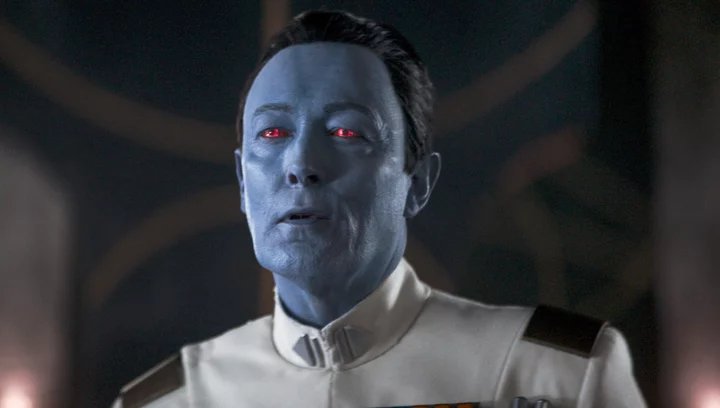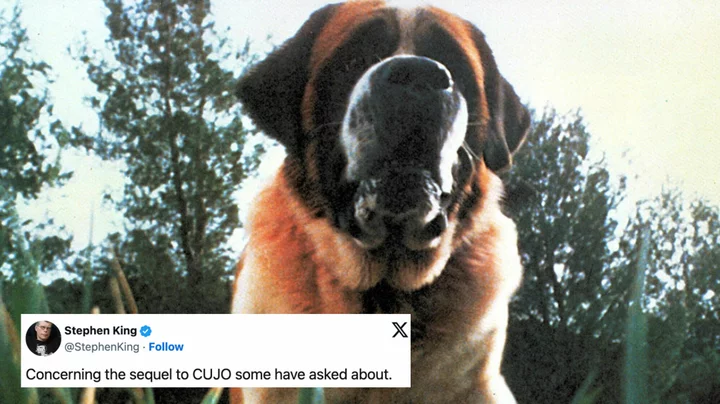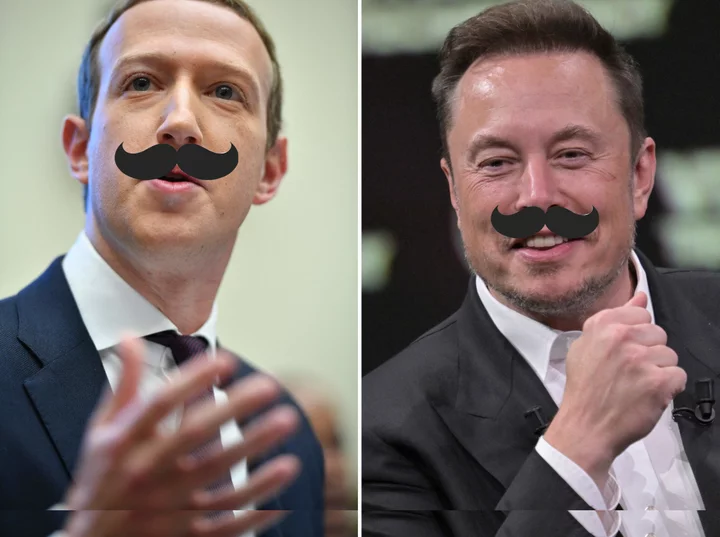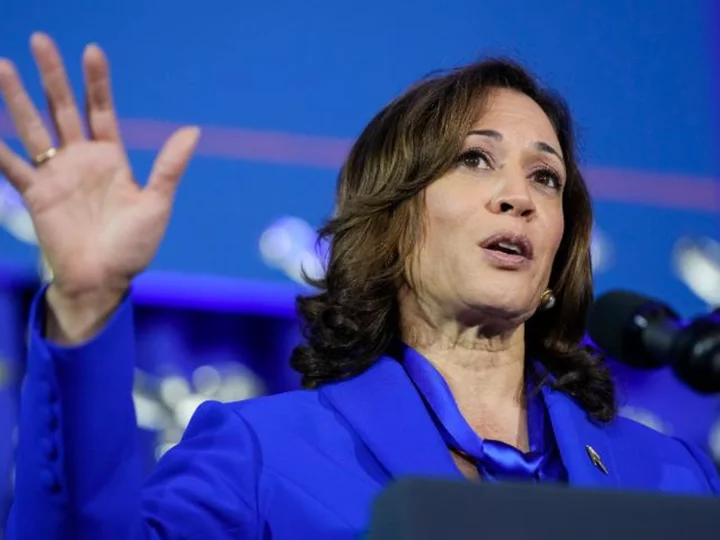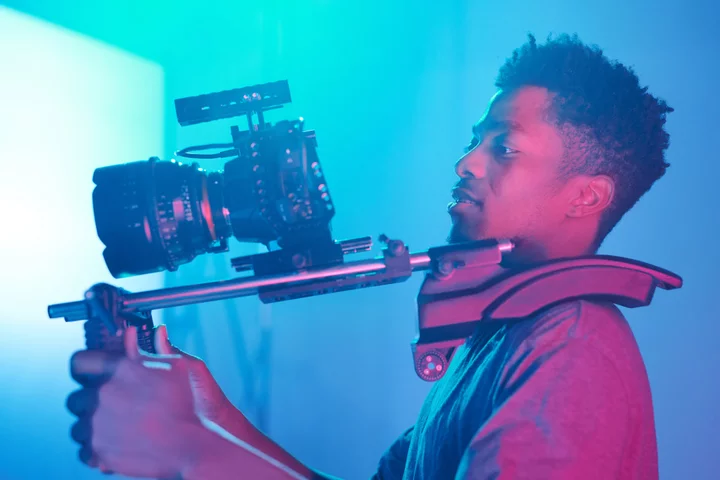So Grand Admiral Thrawn of the Imperial Navy (Lars Mikkelsen) has finally arrived in Star Wars live action, in all his red-eyed, blue-skinned glory, 11 years after fans were first clamoring for him.
But was he worth that wait? And can his late arrival in Ahsoka, five-and-a-half episodes into an eight-episode Disney+ series, save that show from a storytelling disease that's been afflicting much of Star Wars TV lately?
In case you've been living under an asteroid since the original trilogy, Thrawn is one of the most highly regarded bad guys in all of Star Wars canon. Witty, urbane, and very interested in the artwork of any species he's fighting, Thrawn has none of the Dark side Force power of Darth Vader or the Emperor.
Those more famous villains are blunt instruments, albeit extremely watchable ones; Thrawn is more of a Moriarty. A smart villain you love to love, one who's always steps ahead of our heroes and keeps the plot cooking.
But, y'know, only if we're shown rather than told.
A brief history of Thrawn
Grand Admiral Thrawn is literally responsible for reviving Star Wars, at least once. He's the center of Heir to the Empire by Timothy Zahn, a bestselling May 1991 novel that ended what old school fans still call the Dark Times. Returning to the galaxy far, far away five years after the rebellion appeared to win conclusively in Return of the Jedi, here was a commander of an Imperial remnant outwitting the New Republic at every turn.
SEE ALSO: 'Ahsoka' review: Does the Star Wars fan favorite get the show she deserves?Zahn disliked the unlimited "superhero-like" Force power of the Jedi and issued Thrawn with a creature that could neutralize them by projecting a Force-free bubble. In storytelling terms, it worked like crazy; Zahn penned a whole Thrawn trilogy before killing off his Moriarty at the hands of his own bodyguard.
Still, Thrawn was remembered as a high point of the so-called Expanded Universe of Star Wars written content. In 2012, when Lucasfilm announced the Star Wars sequel trilogy — and subsequently, its sale to Disney — the Grand Admiral was a fan favorite choice for its villain. When I wrote a Mashable story on the sale, one that gave birth to my book How Star Wars Conquered the Universe, readers filled the comments with his name, usually followed by a number of exclamation points.
Credit: Penguin Random HouseInstead, in 2014, Lucasfilm announced that Thrawn had never existed. The Heir to the Empire trilogy was now part of Legends, a new name for the increasingly messy canon of post-Jedi storytelling that had to be cleared away to give Episode VII, The Force Awakens, room to surprise us. When I went on a book tour with Zahn in late 2015, he seemed sanguine about this development — and kept close to his chest the fact that he was writing a new Thrawn trilogy, one that would write the wily leader's story anew and tie him into the Dave Filoni animated series Rebels.
Thrawn finally showed up on our screens in 2016, voiced by Mikkelsen in Rebels season 3, quickly becoming the center of Imperial gravity on the planet Lothal. He carried from the Legends books his interests in philosophy and art, becoming a foil for our band of rebel heroes (including the artist and Mandalorian Sabine Wren). At the climax of the following season, young Jedi-trained Ezra Bridger captures Thrawn, taking him to parts unknown courtesy of hyperspace-faring whales, and explaining why both characters were conveniently absent for the events of the sequel trilogy. Ahsoka Tano, rebel leader and estranged Jedi from Filoni's previous Star Wars animated series, The Clone Wars, ends Rebels by inviting Sabine on a mission to find both Thrawn and Ezra.
Meanwhile, Zahn's new trilogy of books gave us a character that was playing more of a long game than anyone knew. Thrawn's background as a member of the mysterious far-flung Chiss was expanded; though he pretended to be in exile from his species, he was in fact sent to study the Empire as much as serve it. Though this backstory saddled the guy with a name origin story no one asked for, much as Solo would do to Han (we learn that Thrawn is short for, ahem, Mitth'raw'nuruodo), we also learned that he had history with Anakin Skywalker during the Clone Wars. Thrawn's meteoric rise was punctuated by delicious scenes with Emperor Palpatine, every bit his equal in the long game stakes.
The second book sent Thrawn on a mission with Darth Vader, never revealing that he knew Vader's hidden origin as Skywalker; the third put him in conflict with proponents of the Death Star project, which Thrawn always saw as a military blunder. Zahn followed up with a prequel series, Thrawn Ascendancy, covering the Chiss years before he encountered the Empire and went native.
Mando and the missing enemy
And that's all Zahn wrote. But the legend of Thrawn only grew, to the point where the size of the Mitth'raw'nuruodo entry in the fan-edited Wookieepedia was only surpassed in size by the Anakin Skywalker / Darth Vader entry. Clearly, fans were still champing at the bit to see the big blue guy in live action.
The Mandalorian began to tease Thrawn's eventual return in season 2 episode 5, when Ahsoka (Rosario Dawson) appears in live action for the first time. Ahsoka encounters Imperial magistrate Morgan Elsbeth (Diana Lee Inosanto), demanding to know Thrawn's location.
He is next mentioned in the underwhelming Mandalorian season 3 finale: Moff Gideon (Giancarlo Esposito) briefly mocks Thrawn's absence in the holographic equivalent of a Zoom call. As building up major villains go, this was certainly an interesting storytelling choice: don't show, barely tell.
When the Ahsoka trailer launched, we got the magic words — "Thrawn's return as heir to the empire" — over appetite-whetting footage of Mikkelsen in blue makeup. (It also whetted the appetite for Filoni's forthcoming Star Wars movie, which was said to be loosely based on Heir to the Empire, though this rumor was scotched by Lucasfilm insiders.)
And so we waited, as patient as Thrawn himself. And waited. And waited. Thrawn was, in effect, the MacGuffin of Ahsoka's first four episodes. Ahsoka, Sabine, Morgan Elsbeth and a disillusioned former Jedi general named Baylan Skoll (Ray Stevenson) were all fighting over a magic map that located Thrawn in another galaxy (confusingly, rather than the unknown regions of the galaxy far far away).
Did this work? It depends, like a lot of Star Wars, on your point of view. Hardcore Rebels and Clone Wars fans are over several moons: Ahsoka has painstakingly realized Filoni's worlds in live action form, and there are hours of fun to be had picking out every easter egg that was formerly part of the animation universe.
As for many of the rest of us — including me, someone who didn't follow Rebels that closely but enjoyed key episodes (like the Kenobi-Maul showdown and the time travel reveal) — Ahsoka has been an exercise in storytelling frustration. We can see the attempt to build up the bad guy, but we can also see the same problem as Book of Boba Fett and Mandalorian season 3: A lack of focus.
The problem became obvious in Boba Fett, which all but abandoned its titular character halfway through, becoming a kind of Mandalorian season 2.5. Entire episodes were devoted to what Mando and Grogu (in training with Ahsoka and CGI Luke Skywalker) did next and how they got back together. Mandalorian season 3 also abandoned its main character for an entire episode on former imperial Doctor Pershing.
Likewise, Ahsoka has been diverted from its mission and its main character. Episode 4 abandoned the Thrawn hunt for a sort-of-reunion, in a world-between-worlds, for Ahsoka and her Jedi mentor, Anakin Skywalker (Hayden Christensen, returning for his second Star Wars TV outing after Obi-Wan Kenobi).
That's great for Filoni fans, who finally got to see this duo together in live action form. But was it great for the story? Ahsoka derived no clear benefit from meeting Anakin. He was teaching her a "final lesson" that was ... about giving up her guilt from being a Clone Wars survivor, or something? There were dialogue echoes from Ahsoka's showdown with Vader in Rebels. But so what?
Objectively, fan service aside, Ahsoka was not advanced one bit by the diversion. Indeed, by shunting its MacGuffin to the side at the halfway mark, the show began to inadvertently suggest Thrawn was less important than we thought.
Thrawn, Star Wars, and starting in the middle
Finally, 17 minutes into Ahsoka episode 5, Mikkelsen made his debut as a fully-fledged, in-the-blue-flesh Thrawn. This should have been headline entertainment news: one of the greatest villains ever created in the entire 47-year history of Star Wars just made his live action debut.
But the reveal was squandered. Many casual fans had already tuned out by this point, baffled by the (alas for the late, great Ray Stevenson) paper-thin character of Baylan, turned off by the Anakin duel: long on cool, short on meaning. Mikkelsen got a handful of scenes to showcase Thrawn's menace, though Filoni's Star-Wars-AI-like dialogue did him few favors. And even those scenes were overshadowed by the surprise reunion of Sabine and Ezra at episode's end.
A long time ago, in a film-making galaxy that was a lot less sci-fi friendly than today, George Lucas wrote a very long script he called The Star Wars. Lucas knew he could only get it made if he cut it down, so he slashed the story in half and started in the middle — with the arrival of Darth Vader. (The full story of the script's origins is rather more complicated than that, but the part about starting in media res is basically true.)
Thus was the power of Star Wars established in its first few minutes. There was no keeping Vader off screen, no attempt to ramp up the tension by having a bunch of Stormtroopers and Imperial officers discuss him in hushed tones. He strides through that doorway onto the Tantive V, and the stakes are immediately clear. This is the baddest of bad guys, he can lift a rebel commander off the ground and break his neck, and he's wearing all black. Any questions?
This storytelling convention — introduce the villain so we know what's at stake — was followed in all subsequent Star Wars films. Vader is front and center at the start of Empire. Jedi raises the stakes by bringing the Emperor to the new Death Star in its first scenes, not saving him for a throne-room reveal. Maul in Phantom Menace, Anakin himself in Revenge of the Sith, Kylo Ren in the new trilogy: all appear as early as possible.
Filoni's experience in animation TV suggested a different lesson. Clone Wars and Rebels had many seasons in which to flesh out their universe; you could build from the threat of the Jedi-hunting inquisitors in Rebels season 1 to the threat of Thrawn in season 2. But live action is a different beast. Casual Star Wars fans are watching. They, like all audiences, need to know who and what the threat is. If you're going to withhold the origins of a character we've never met before (Baylan), and barely hype up the Thrawn threat, why should they stick around?
In another universe, perhaps, Filoni took Lucas' hard-won lesson to heart and started Ahsoka with episode 5. Or maybe we cut away to Thrawn in his unknown galaxy in Episode 1, with scenes that do a little world-building on that end and explain why we should care about this character. In this universe, however, the Grand Admiral faces his greatest meta-challenge: saving a story that cares little about him, with just three chapters left to do it.

